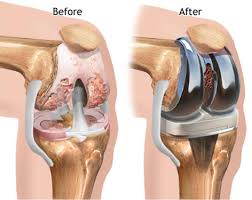+918048051936

This is your website preview.
Currently it only shows your basic business info. Start adding relevant business details such as description, images and products or services to gain your customers attention by using Boost 360 android app / iOS App / web portal.
Total Knee Replacement What to Expect from Knee Re...

Total Knee Replacement What to Expect from Knee Replacement operation An important factor in deciding whether to have total knee replacement operation is understanding what the operation can and can’t do. More than 90 percent of individuals who undergo Knee Replacement Surgery experience a dramatic reduction of knee pain and a significant improvement in their ability to perform the common activities of daily living. However, Knee Replacement Surgery will not enable you to do more than you could before your knee problem developed. For example if you could not run for 5 kilometers before your knee problem started, do not expect to do so after your surgery. Following surgery, you will be advised to avoid certain activities for the rest of your life including jogging and high-impact sports. Even with normal use and activities, an artificial joint (prosthesis) develops minimal wear over time. If you decide to participate in high-impact activities or are over-weight, this wear may accelerate and cause the prosthesis to loosen and become painful. With appropriate activity modification, knee replacement can last several years. How your New Knee is different ? You may feel some numbness in the skin around your incision. You also may feel some stiffness, particularly with excessive bending. These differences often diminish with time and most patients find these are minor compared to the pain and limited function they experienced prior to surgery. After knee replacement operation, you should be able to bend your knee to right angle (90 degrees) by 2-3 weeks. Restoration of full motion of your knee (heel touching buttock) is difficult to achieve. The motion of your knee replacement after surgey is predicted also by the motion of your knee before surgery. Most patients can expect to nearly fully straighten the replaced knee and to bend the knee sufficiently to go up and down the stairs and get in and out of a car. Since the scar is in front of the knee, kneeling can be uncomfortable but not harmful. After surgery, make sure you also do the following: Participate in regular light exercise programs to maintain proper strength and mobility of your new knee. take special precautions to avoid falls and injuries. Notify your dentist that you had a knee replacement. You should be given antibiotics before all dental surgery for the rest of your life. See your Orthopaedic Surgeon periodically for a routine follow-up examination and X-rays, usually once a year.

